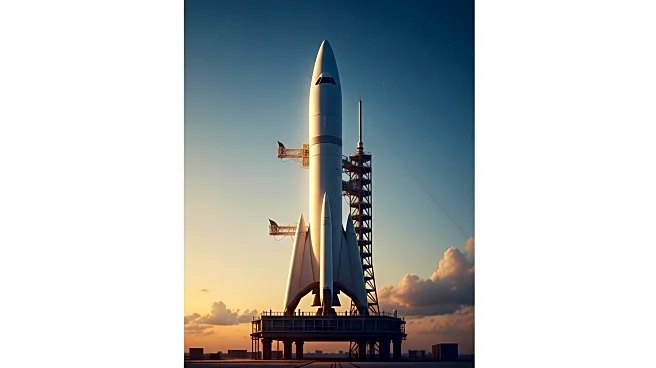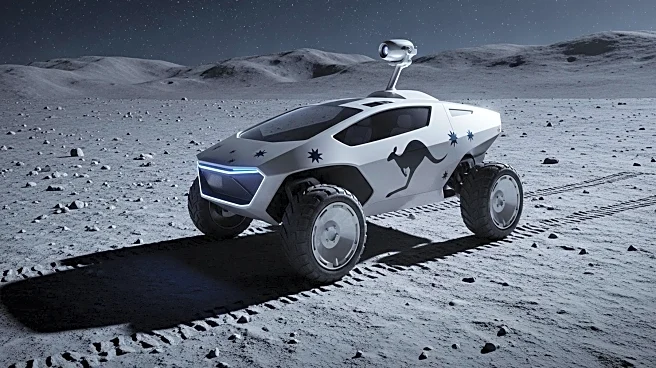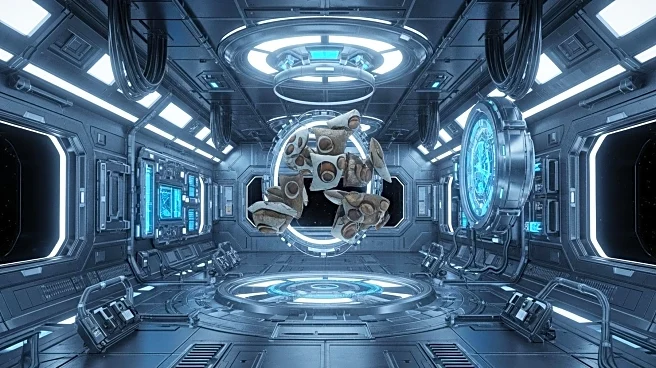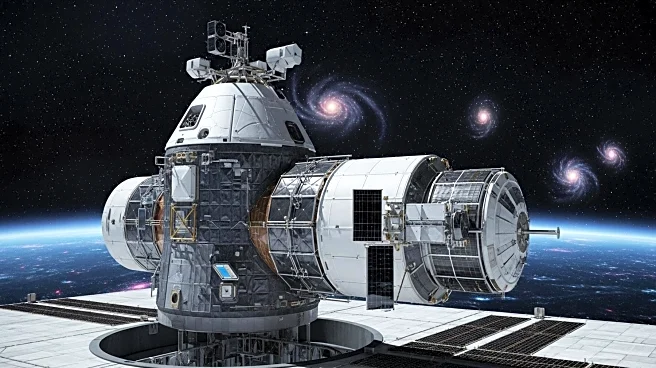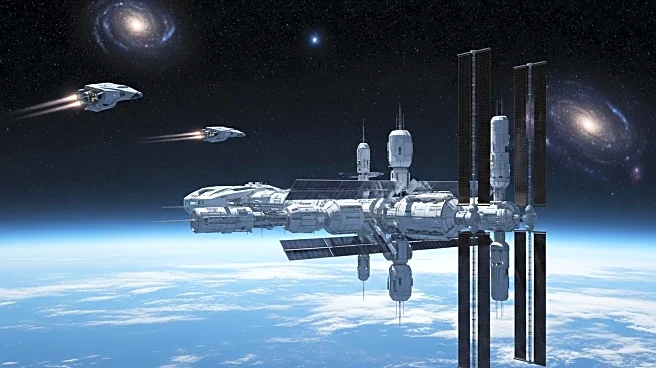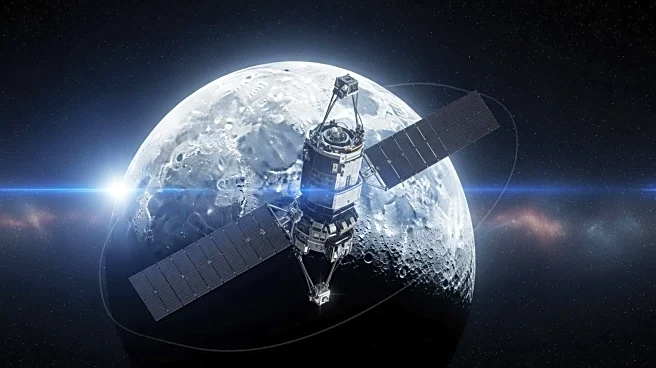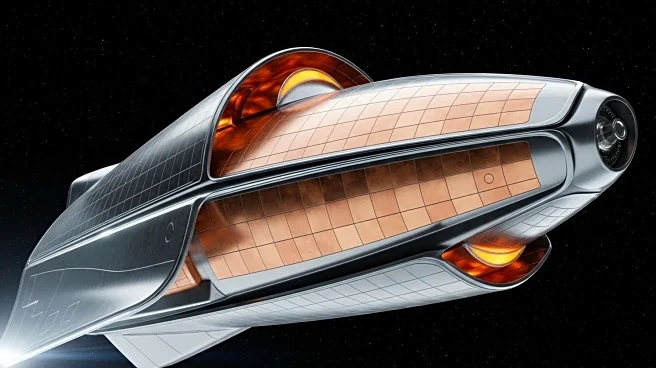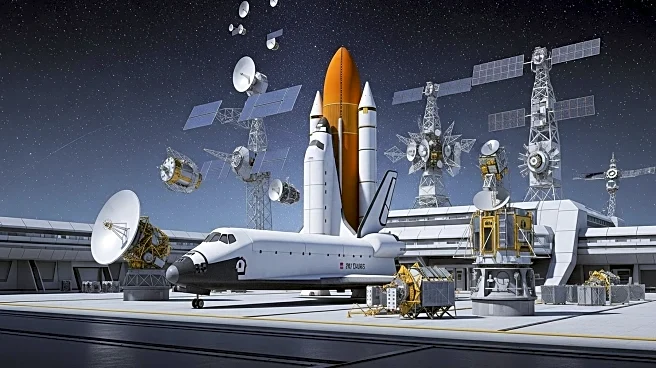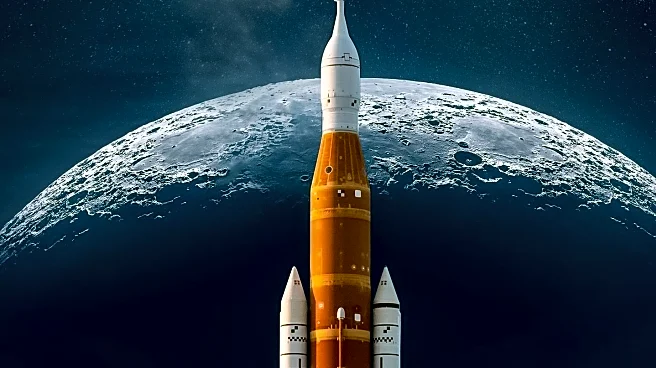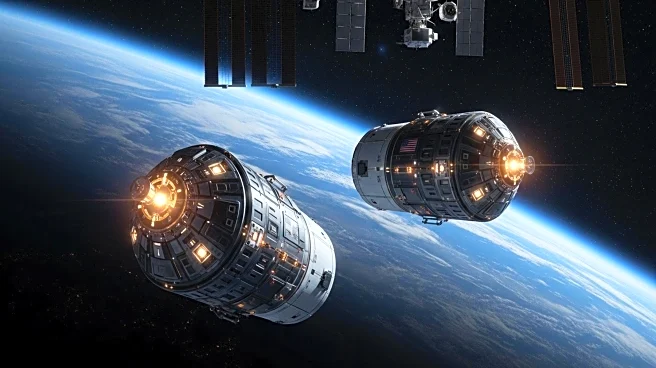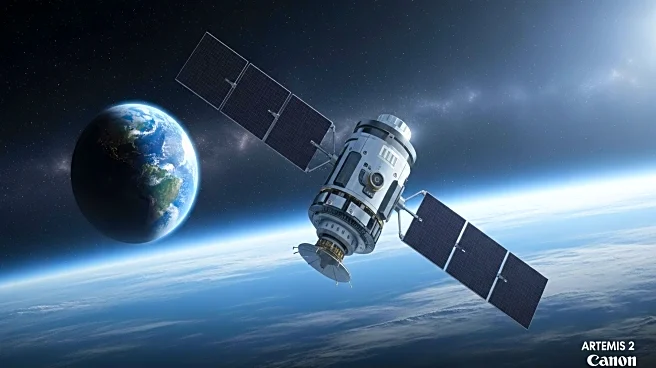What is the story about?
What's Happening?
NASA has announced that media representatives are invited to view the fully assembled Artemis II Space Launch System (SLS) rocket and Orion spacecraft at the Kennedy Space Center in Florida. The event is scheduled for mid-October, with Canadian media required to apply for accreditation by September 22, 2025. The Artemis II mission, set to launch by April 2026, will be the first crewed flight test of the Orion spacecraft on the SLS rocket. Canadian Space Agency astronaut Jeremy Hansen will participate, marking the first time a Canadian will go on a mission around the Moon.
Why It's Important?
The Artemis II mission represents a significant milestone in lunar exploration, as it will be the first crewed mission to test the Orion spacecraft and SLS rocket. This event underscores the collaborative efforts between NASA and international partners like the Canadian Space Agency. The inclusion of Canadian astronaut Jeremy Hansen highlights the growing role of international cooperation in space exploration. The mission aims to pave the way for future lunar missions, including potential human landings on the Moon, which could have profound implications for scientific research and international space policy.
What's Next?
Following the media event, the Artemis II mission is expected to proceed with final preparations for its launch in April 2026. The mission will test critical systems and procedures necessary for future lunar exploration. Stakeholders, including NASA and international partners, will closely monitor the outcomes of this mission to inform subsequent missions. The success of Artemis II could accelerate plans for more ambitious lunar missions, potentially involving human landings and extended stays on the Moon.
Beyond the Headlines
The Artemis II mission could influence broader discussions on space exploration ethics, international collaboration, and the allocation of resources for space missions. As countries like Canada take on more significant roles in space exploration, questions about the distribution of technological benefits and responsibilities may arise. Additionally, the mission could inspire educational initiatives and public interest in STEM fields, fostering a new generation of scientists and engineers.
AI Generated Content
Do you find this article useful?
